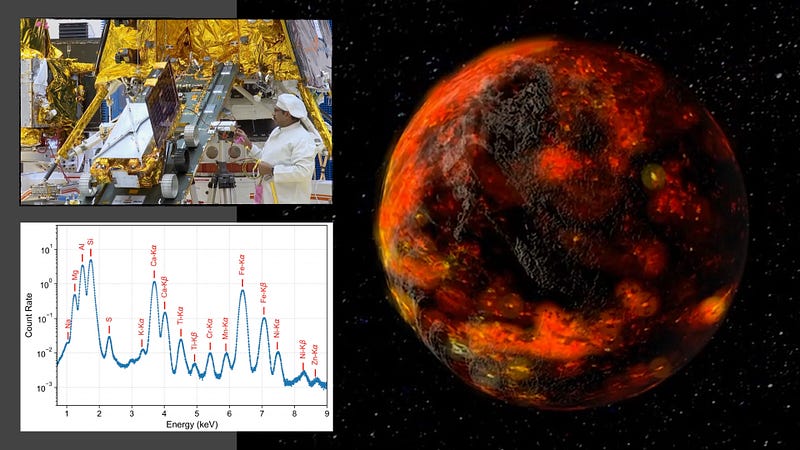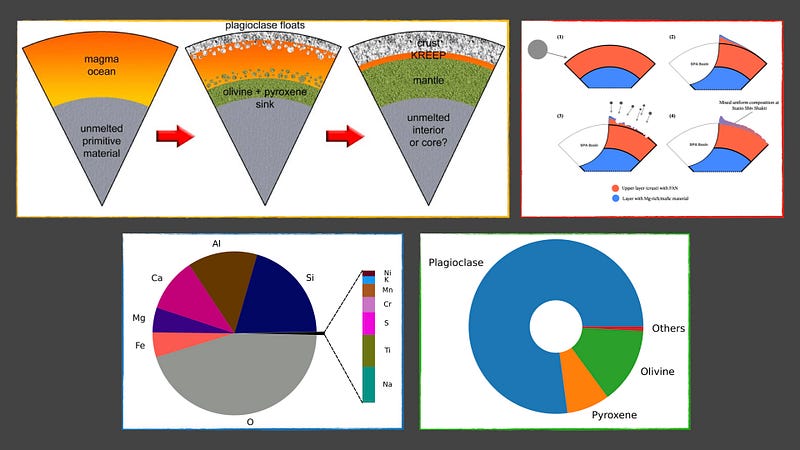Exploring the Moon's Origins: Chandrayaan 3's Groundbreaking Findings
Written on
Chapter 1: Introduction to Chandrayaan 3
The Chandrayaan 3 rover has made significant contributions to our understanding of the Moon's origins. Through its Alpha Particle X-ray Spectrometer (APXS), it has provided the first ground-based measurements of lunar soil and rocks at high latitudes. This critical data supports the hypothesis that the Moon was entirely molten around 4.5 billion years ago. A recent publication in Nature by ISRO scientists details how the detected elements and their abundances allow us to infer the mineral composition of the Moon’s crust, which resembles the crustal measurements made by previous lunar landers.

The rover, named Pragyan (meaning 'wisdom'), also observed a slightly higher concentration of heavier minerals in its region than in other parts of the Moon. Scientists theorize that these minerals were brought to the surface by a massive impact shortly after the Moon's formation, further informing our understanding of its geological evolution.
Section 1.1: The Geological Significance of Findings
The findings from Chandrayaan 3 are particularly significant because they come from a unique lunar region. If the rover had measured vastly different elemental compositions, it could have fundamentally altered our understanding of the Moon's early magma ocean. Some scientists have posited that the Moon was only partially molten or that its crust solidified unevenly, and the data from Chandrayaan 3 serves as a vital reference point in this debate.
Chandrayaan-3 successfully launched: What is its purpose? - This video discusses the objectives and significance of the Chandrayaan-3 mission, focusing on its role in lunar exploration.
Section 1.2: Pragyan’s Measurements and Their Implications
Chandrayaan 3’s measurements not only contribute to our knowledge of the Moon's crust but also provide a calibration point for future orbital studies of high-latitude and sub-polar regions. Previous data for these areas were often based on extrapolations from missions that landed in different regions.
Pragyan, India's first planetary rover, faced engineering challenges that limited its travel distance to about 100 meters from the lander, compared to the anticipated 300–400 meters. Despite this limitation, Pragyan's mission parallels NASA's Sojourner rover on Mars, which laid the groundwork for subsequent, more complex Mars missions.
Chapter 2: The Pragyan Rover's Instrumentation

The APXS instrument, a miniaturized X-ray spectrometer weighing only 0.7 kilograms, encountered numerous challenges prior to its deployment. It was essential for the instrument to be within 5 centimeters of its target to function properly, which required innovative design solutions.
The procurement of the radioactive Curium-244 source, necessary for the APXS, was another hurdle, as it was only obtainable from Russia. The entire process took approximately seven years.
Story of Mission Chandrayaan-3: India Creates History - This video outlines the journey and achievements of the Chandrayaan-3 mission, highlighting ISRO's advancements in lunar exploration.
Research data from other instruments aboard Chandrayaan 3 will be released soon. Currently, ISRO has made an initial set of peer-reviewed data available online, accessible after free registration. This data complies with international standards, facilitating global research collaborations.
In conclusion, the Chandrayaan 3 mission sets the stage for future lunar exploration, with ISRO planning a more ambitious Chandrayaan 4 mission aimed at returning lunar samples to Earth. As we move forward, the implications of these findings will undoubtedly enhance our understanding of the Moon's history and evolution.